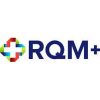Ohayou Gozaimasu. This week the term/phrase specific to Japan, the doctor would like to introduce to the readers is: “Fukusui bon ni kaerazu.” For those of you moderately fluent in Japanese, the phrase is: “覆水盆に帰らず.” The literal translation is “Spilled water will not return to the tray” or simply stated, “No use crying over spilled milk.” The good news is that if an individual having dinner in Japan spills their milk, Sake is always an acceptable replacement. In fact, forget the milk and just order some Sake out of the gate.
In this week’s guidance the doctor will expand on the use and importance of “Seihin Hyojun Sho.” The Seihin Hyojun Sho is the Device Master File, similar in construction to the European Technical File. However, there is additional information placed into the file specific to Japanese regulatory requirements and the Market Authorization Holder (MAH). When PMDA shows up on a device manufacturer’s door step for a friendly visit, they will probably want to review the Seihin Hyojun Sho. As the doctor nears the end of this series of articles on MO 169; hopefully, Dr. D’s “hortative” (look-it-up) style of writing and analyzing requirements will continue to be beneficial to the readers. Enjoy this week’s guidance.
Ministerial Ordinance Number 169 (2004)
Chapter 3 Manufacturing Control and Quality Control in Manufacturing Sites of Labeling, etc. – Category Medical Device Manufacturers, etc.
(Documents Concerned with Manufacturing Control and Quality Control)
Article 66
The labeling, etc. – category medical device manufacturer, etc. shall, for each of the products, establish Seihin Hyojun Sho, concerned with their duties, describing the following items in each of the manufacturing sites.
(1) The items concerned with the storing,
(2) The items concerned with the packaging and labeling,
(3) The items concerned with the testing, and
(4) Other necessary items.
2. The labeling, etc.-category medical device manufacturer, etc. shall, in order to conduct appropriately the duties specified in next Article to Article 72, establish the documented procedure concerned with the manufacturing control and quality control, control of the nonconforming products, corrective actions, internal audits, training, and document and record control in each of the manufacturing sites.
What device manufacturers need to know
If a device manufacturer is selling Class IIa and IIb product into the European market, a Technical File for these devices; hopefully a robust one, already exists. As stated in the introduction, a Seihin Hyojun Sho is nothing more than the Japanese equivalent of a Technical File. The expectation from PMDA is that the Device Master File be accurate, complete, and current. That means it cannot sit on a shelf collecting dust, hint, hint!
There are specific requirements associated with Article 66 that device manufacturers need to ensure are captured within their Seihin Hyojun Sho (reference Table 1.0):
- Product storage;
- Product packaging;
- Product labeling; and
- Product testing.
The Device Master File should adequately describe storage, packaging, labeling, and testing, and a reference to the actual procedure number. However, written procedures are still needed to address these requirements.
Chances are pretty good device manufacturers already have in place procedures for: (a) various elements of manufacturing, (b) quality control, (c) control of nonconforming product; (d) CAPA; (e) internal audits; (f) training; (g) document control; and (h) the control of records. If your organization has procedure for these elements already approved and released, then DSTSS “Don’t sweat the small stuff.” However, if these procedures have not been scripted, there is not time like the present to start typing.
| Item to be Stipulated |
Documents Containing the Information |
| Generic Name & Selling Product Name |
N/A for Foreign Facilities |
| Approval Date & Number |
N/A for Foreign Facilities |
| Specifications of the Product |
DHF |
| Design & Drawings |
DHF |
| Manufacturing Method & Procedures |
DHF, Procedures, Work Instructions, & Test Methods
|
| * Courtesy of PMDA Website |
What device manufacturers need to do
Now granted, high-level procedures are acceptable for general requirements associated with storage, packaging, labeling, and testing; however, product-specific work instructions are going to need to be created for specific product packaging and labeling requirements. Unless special storage requirements are needed for products, one high-level procedure should be acceptable. Testing requirements, although typically defined in the batch work order or production traveler, will still need a work instruction that defines the parameters of testing and the operation of test equipment (don’t forget the test method validation).
Remember, processes (e.g., packaging) described within the Seihin Hyojun Sho still needs to be supported by written procedures and work instructions. During a compliance inspection PMDA will review a Device Master File. For a pre-approval inspection, PMDA will permit the material typically placed into the Device Master File to be presented in an alternate method, providing all of the appropriate information is available.
From a procedural standpoint putting all of the requirements delineated within Article 66 into one procedure is not practical. Why? For starters, the requirements are too disparate for inclusion into one cohesive document, so device manufacturers will need to place these requirements into multiple procedures. Table 2.0 reflects the need to consider multiple procedures to compliance with Article 66.
| Procedure(s) |
Procedure Name(s) |
Requirement |
21 CFR Part 820 |
EN ISO 13485:2003 |
MHLW MO 169 |
1274-1 Rev B
1275-1 Rev A
1276-1 Rev A |
Material Handling & Storage
Product Packaging
Labeling Control |
Manufacturing Control & Quality Control |
820.80
820.120
820.130
820.150
|
7.5.1
7.5.5
|
Article 66
|
Takeaways
For this edition of DG, Dr. D will leave the readers with three pieces of guidance. One – compilation of the
Seihin Hyojun Sho is a necessary evil for device manufacturers wanting to introduce product into the Japanese market. Two – PMDA will review the
Seihin Hyojun Sho during an inspection. Three – it is not feasible to fit all of the requirements associated with Article 66 into one cohesive procedure, so please do not frustrate yourself by trying.
Until the next edition of DG, when the doctor provides guidance on: MO 169 – Chapter 3 “Manufacturing Control and Quality Control in Manufacturing Sites of Labeling, etc. Category Medical Device Manufacturers, etc.” (Article 67 – Manufacturing Control and Quality Control), sayonara from Dr. D and best wishes for continued professional success.
References:
- Code of Federal Regulation. (2011, April). Title 21 Part 820: Quality system regulation. Washington, D.C.: U. S. Government Printing Office.
- Device master file. (2012). Emergo Group Website. Retrieved November 29, 2012, from http://www.emergogroup.com/services/japan/device-master-file-japan
- EN ISO 13485:2012. (2012, February). Medical devices – quality management systems – requirements for regulatory purposes (EN ISO 13485:2012).
- Linguanaut the Japanese phrases and expressions. (2012). Retrieved September 8, 2012, from http://www.linguanaut.com/english_japanese.htm
- Ministerial Ordinance 169. (2004). MHLW ministerial ordinance 169 on standards for manufacturing control and quality control for medical devices and in-vitro diagnostic reagents. Retrieved June 1, 2012, from http://www.pmda.go.jp/english/service/pdf/ministerial/050909betsu3.pdf
- Quality management system inspection of medical devices and in-vitro diagnostics in Japan. (2012). PMDA Website. Retrieved November 30, 2012, from http://www.pmda.go.jp/english/service/pdf/qms.pdf
Related Articles
-
Share your research, experience and expertise with your peers at the upcoming Medtech Advanced Manufacturing Conference and Medtech Supply Chain Intelligence Summit. Call for abstracts is now open.
-
Jordi labs and its team of Ph.D. analytical chemists developed a proprietary, multi-detector approach to ensure that all extractables are accurately characterized to comply with global materials testing regulatory requirements.
-
The purpose of the Best Practices in Supply Chain Resiliency and Quality Working Group is to improve medical device quality and supply chain resiliency by expanding MedAccred adoption through the tiers in the supply chain, identifying best practices to supplement…
-
Excess humidity can affect a pharmaceutical’s structure, chemical stability and dissolving rate, and this moisture can come in contact with product at multiple points throughout production and shipping. Fortunately, new technologies are making it easier for manufacturers and shippers to…





